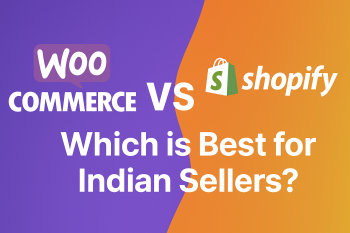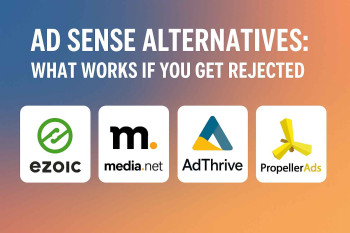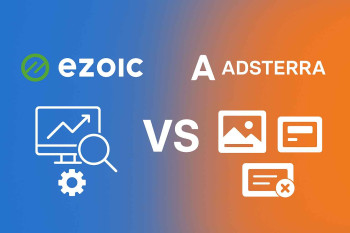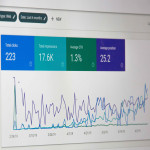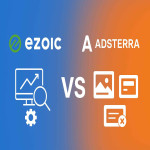Author: VermaBrothers Technologies
Monetising content online has never been more accessible — but it also comes with more options than ever before. Whether you’re a beginner blogger, a seasoned content creator, or an agency helping clients scale their digital presence, understanding the nuances between YouTube monetisation vs website monetisation is crucial. In this guide, we’ll break down the differences, advantages, challenges, and best practices, and explain why combining both strategies can be the ultimate way to maximise revenue in 2025.
Understanding the Basics
Before diving into the comparison, let’s clarify what we mean by YouTube monetisation and website monetisation.
-
YouTube Monetisation: Primarily through the YouTube Partner Program (YPP), this involves earning revenue via ads shown on your videos. Additional revenue streams include channel memberships, Super Chats, YouTube Premium revenue, and sponsorship deals.
-
Website Monetisation: Usually involves embedding ads through Google AdSense, affiliate marketing, sponsored content, or subscription models. Website monetisation is flexible — you control placement, content, and ad partners.
At first glance, both seem similar: you create content and earn money. But the mechanisms, rules, and opportunities are quite different.
Key Differences Between YouTube and Website Monetization
| Feature | YouTube Monetization | Website Monetization (AdSense) |
|---|---|---|
| Setup Time | You need 1,000 subscribers and 4,000 watch hours in the past 12 months to qualify. | You can start a blog or website immediately; approval takes 1–7 days if compliant. |
| Revenue Type | CPC (Cost per Click), CPM (Cost per 1,000 views), channel memberships, sponsorships. | Primarily CPC and CPM ads; can include affiliate links, sponsored posts, and premium content. |
| Traffic Control | Heavily depends on YouTube’s algorithm and search/explore traffic. | You control traffic sources via SEO, social media, email marketing, and paid ads. |
| Content Ownership | Videos remain under YouTube’s platform rules. Monetization can be paused if policy is violated. | Full ownership of website content. You’re responsible for policy compliance. |
| Flexibility | Limited ad placement control; YouTube inserts some ads automatically. | Full control over ad placements, formats, and layout for optimal revenue. |
| Global Reach | Excellent global reach due to YouTube’s massive audience. | Reach depends on your SEO, marketing, and niche focus. |
| Revenue Potential | High if videos go viral, but highly inconsistent month-to-month. | Generally steadier once traffic and ad placement are optimized. |
Advantages of YouTube Monetisation
Built-in Audience
YouTube has over 2 billion logged-in monthly users. For creators, that’s an enormous ready-made audience. Unlike websites, you don’t need to build your own domain authority immediately.
Video-First Content
Video consumption continues to rise globally. If your niche benefits from visual content (tutorials, reviews, entertainment), YouTube is ideal.
Multiple Revenue Streams
Besides ads, creators can earn from memberships, Super Chats, affiliate marketing, and sponsorships.
Algorithm-Driven Growth
YouTube’s algorithm can help videos reach thousands to millions quickly, even for new creators.
Mobile Optimization
YouTube’s mobile interface ensures most of your audience has a seamless experience — which is critical since over 70% of viewers watch on mobile devices.
Advantages of Website Monetisation
Full Control Over Content and Ads
You decide what appears, where, and how often. You’re not limited by a third-party platform’s rules.
SEO Benefits
Organic traffic from Google, Bing, and other search engines can provide steady, long-term traffic. Unlike YouTube, your website traffic doesn’t depend on algorithmic “pushes.”
Diverse Monetisation Methods
Beyond AdSense, you can integrate affiliate programs, paid subscriptions, sponsored posts, and digital products.
Brand Authority
Having your own domain increases credibility. Agencies and clients often trust a professional website over a YouTube channel alone.
Data Ownership
Analytics, email lists, and visitor data are yours, which can help grow other revenue streams like email marketing or product launches.
Challenges of YouTube Monetisation
-
Algorithm Dependency
Your income heavily relies on YouTube’s recommendation system, which can be unpredictable. -
Ad Policy Restrictions
Content needs to follow strict guidelines. One strike or demonetization can pause your revenue. -
Competitive Platform
Millions of creators are competing for attention. Niches can be saturated. -
Revenue Fluctuations
CPM rates vary by region, season, and advertiser demand — meaning your monthly income may not be stable.
Challenges of Website Monetisation
-
Traffic Generation Is Harder
You need SEO, social media, or paid campaigns to get significant traffic. Unlike YouTube, there’s no algorithm “boost.” -
Technical Management
Running a website requires hosting, security, maintenance, and sometimes coding skills. -
Slow Initial Growth
It can take months to get consistent traffic, which means revenue may be low in the beginning. -
Competition in Niche Keywords
High CPC niches can be competitive, requiring constant content updates and SEO optimisation.
Monetization Comparison: Key Metrics
| Metric | YouTube | Website |
|---|---|---|
| Initial Barrier | High (subscriber & watch hours) | Low (just need a compliant website) |
| Time to Earnings | 1–6 months (if consistent & quality content) | 3–12 months (SEO growth) |
| Revenue Stability | Low–Medium | Medium–High (once traffic stabilizes) |
| Content Longevity | Medium (videos can get old but evergreen content works) | High (blogs rank for years if optimized) |
| Scalability | Medium–High (requires more video output) | High (one well-optimized post can scale indefinitely) |
Hybrid Strategy: Why Using Both Works
Here’s the truth: relying solely on one platform limits your revenue potential. Combining YouTube monetisation + website monetisation allows you to leverage the strengths of both while offsetting weaknesses.
How It Works:
Repurpose Content Across Platforms
Turn a blog post into a video and vice versa.
Embed YouTube videos in your blog for higher engagement and ad impressions.
Diversify Revenue Streams
YouTube ads + Super Chats + memberships
Website ads + affiliate marketing + sponsored content
Cross-Promotion
Drive your YouTube audience to your website for deeper engagement.
Encourage blog readers to subscribe to your YouTube channel for tutorials.
Authority Building
Websites build credibility in search engines.
YouTube builds authority in video searches and social media.
Analytics Advantage
Use website analytics to understand what content converts best.
Use YouTube analytics to track engagement and refine video topics.
Result: More stable, higher, and diversified revenue — without relying solely on a single platform or algorithm.
Tips to Maximise Hybrid Monetisation
SEO-Optimised Blog Content
Use high CPC keywords and embed relevant YouTube videos to boost ad impressions.
YouTube SEO
Use targeted keywords, engaging thumbnails, and playlists to increase watch time and monetisation eligibility.
Email List Building
Both platforms can feed into your email list, giving you a direct communication channel for promotions or product launches.
Consistent Branding
Use the same logo, colour palette, and tone across your blog and YouTube channel. This increases recognition and trust.
Repurpose Analytics
Monitor which video topics drive website clicks, and which blog posts drive YouTube engagement. Use insights to plan future content.
Common Mistakes Beginners Make
-
Focusing only on one platform → limits growth and revenue.
-
Ignoring SEO → both YouTube and website traffic will plateau.
-
Monetising too early → low-quality content can lead to poor engagement and demonetization.
-
Ignoring analytics → without data, you won’t know what works.
FAQs
Q1: Can beginners realistically earn from both platforms at the same time?
Yes. The key is consistency, high-quality content, and a deep understanding of your niche. Hybrid monetisation allows revenue diversification even if one platform underperforms temporarily.
Q2: How much can you earn from YouTube vs a website?
It depends on traffic, niche, and audience location. YouTube CPM varies globally ($1–$10+), while website CPC can range from $0.1–$50+ depending on your niche.
Q3: Do I need technical skills for a website?
A basic understanding of WordPress, hosting setup, and content management is sufficient to get started. You can always outsource technical aspects to agencies like VermaBrothers Technologies.
Q4: Which is better for agencies helping clients?
A hybrid strategy is ideal. Agencies can optimise websites for clients and repurpose video content to maximise revenue streams.
Conclusion: Use Both for Maximum Monetisation
In 2025, the smartest approach isn’t choosing YouTube vs website monetisation — it’s leveraging both.
-
YouTube brings massive reach, video-first engagement, and algorithm-driven traffic.
-
Your website gives control, brand authority, and long-term SEO benefits.
-
Together, they create diversified revenue streams, cross-promotion opportunities, and greater stability.
Whether you’re a beginner creator or an agency looking to grow client revenue, adopting a hybrid approach ensures you’re not leaving money on the table.
Call to Action
Need help implementing a hybrid monetisation strategy? VermaBrothers Technologies specialises in AdSense website setup and monetisation, YouTube monetisation, SEO optimisation, and full-service digital growth. Contact us today to maximise your online revenue and build a sustainable, scalable digital presence!

